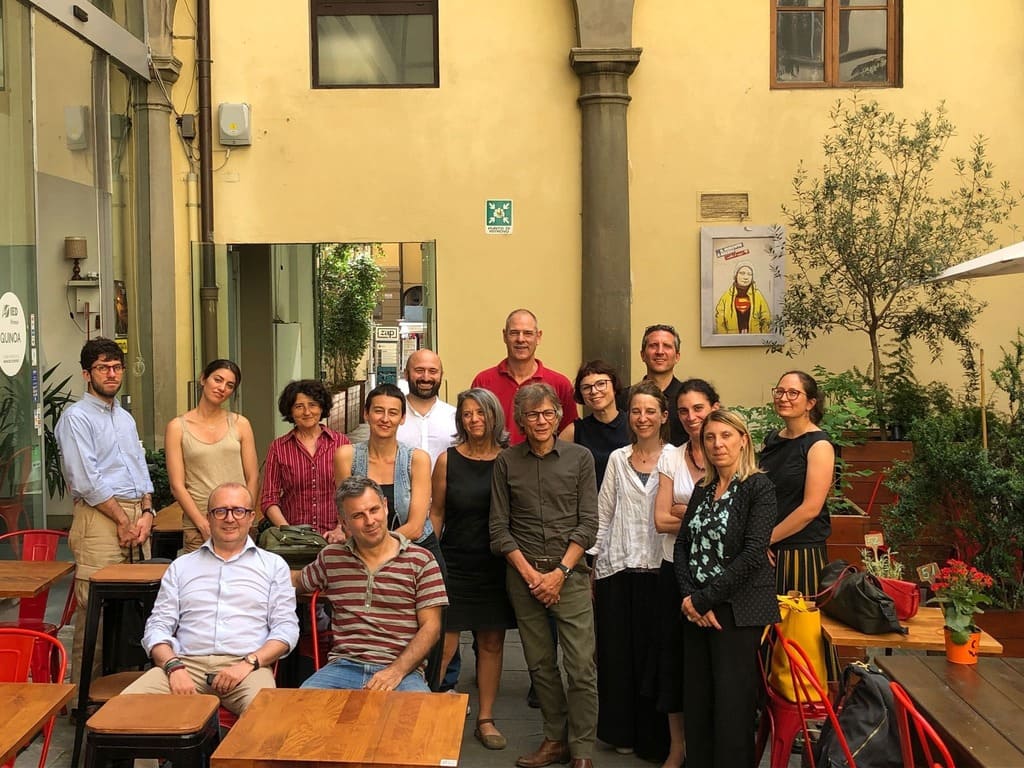What should we do with abandoned spaces and facilities in the outskirts of our cities? How can we recover such spaces, while at the same time strengthening social cohesion in our neighbourhoods and citizens’ participation in local administrations? In Italy, in the last ten years, a remarkable number of municipalities (around 200 – out of 7.900) has decided to adopt local regulations governing the co-management of urban commons within their respective territories, precisely with the intention to enhance citizens’ participation in local administrations and support social economy. This blog tells the story of the legal concept of ‘urban commons’ under Italian law and reflects on its impact on local social economy operators.
Horizontal subsidiarity
The starting point of this short ‘legal’ story dates back twenty-two years. In 2001, the second part of the Italian Constitution was deeply amended and a different division of competences between the central State and the twenty regional authorities was introduced. In the frame of that constitutional reform, the principle of subsidiarity made its first appearance in the Constitution. Most EU lawyers are familiar with the notion of ‘vertical’ subsidiarity, which regulates the exercise of legislative power between the EU and its Member States whenever a shared competence is at stake. A similar type of subsidiarity was introduced in the Italian Constitution in 2001, regulating the ‘vertical’ exercise of administrative functions between the central State and the local authorities. Nevertheless, the constitutional reform also introduced another kind of subsidiarity, this time ‘horizontal’, governing the relationship between citizens and their peers willing to undertake initiatives of general interest. Indeed, according to the last Alinea of Article 118 of the Italian Constitution
‘The State, regions, metropolitan cities, provinces and municipalities shall promote the autonomous initiatives of citizens, both as individuals and as members of associations, relating to activities of general interest, on the basis of the principle of subsidiarity.’
Under this constitutional provision, the role of the public sector is that of a ‘facilitator’, promoting bottom-up initiatives of general interest coming from civil society. Public authorities should thus take over a given service or activity only where citizens’ action cannot effectively guarantee its adequate supply. Some years after the reform, many municipalities in Italy saw in this provision the perfect legal ‘hook’ to favour bottom-up initiatives of general interest by introducing local regimes on ‘urban commons’. By doing this, they were actually ‘mainstreaming’ (ie contributing to make the new ‘mainstream’) part of a proposal made earlier by a group of legal experts called the ‘Rodotà Commission’.
The Rodotà Commission
In 2007 the Civil Law Professor Stefano Rodotà (along with other experts) was assigned by the Italian Ministry of Justice the difficult task to reform the discipline embedded in the Italian Civil Code concerning public goods. The Civil Code had not changed since 1942, despite the entry into force of the Constitution in 1948 and the social and economic, as well as scientific and technological transformations that had occurred in the meantime. One of the ‘Rodotà Commission’ suggestions that is relevant to the emergence of urban commons in Italy is the proposed reform of the categorisation of goods as this was codified in 1942. The Commission intended to clearly identify the types of goods that are truly incapable of being owned by private subjects, such as railways and aqueducts, and distinguish them from those destined for public use, but that could potentially also belong to private individuals, such as gardens or artistic collections.
The members of the Commission proposed to abolish the categories of state property and unavailable goods (ie those goods which cannot be sold) and vouched for the re-categorization of the types of goods. One of the re-categorizations, that of ‘common goods’ (better known as commons), immediately stands out. The Commission defined ‘commons’ as those goods that are of non-rival but exhaustible consumption, such as rivers, lakes, air, shores (but today also internet and energy), which – regardless of their public or private ownership – are functional to the exercise of fundamental rights and the free development of citizens. The Rodotà Commission also added an intergenerational component to the legal regime applicable to commons, providing that the law must guarantee the direct and collective use of such goods also in favour of future generations. However, the amendment proposed by the Rodotà Commission failed to find sufficient political support and was therefore abandoned by the Italian legislator. As a consequence, the Italian regime on public and private goods is still essentially the same as in 1942.
Nevertheless, the lack of political support at national level did not prevent many municipalities in Italy from mainstreaming part of the Rodotà Commission’s proposal, by implementing the horizontal subsidiarity embedded in Article 118 of the amended Constitution and promoting bottom-up initiatives of general interest. The first city adopting a local regulation on urban commons was Naples (in 2012), followed by Bologna (in 2014) and Chieri, nearby Turin (in 2014). As previously mentioned, today there are approximately 200 cities in Italy which have adopted specific regulations governing the regime of urban commons, based on a shared management between the local public administration and the local civil society.
Mainstreaming urban commons
In all of these municipal regulations, ‘urban commons’ are basically defined along the lines of the Rodotà Commission’s proposal, namely as those tangible and intangible goods that – regardless of their public or private ownership – are recognised by citizens and the administration to be functional to the exercise of the fundamental rights of citizens, to their individual and collective well-being and to the interest of future generations.
The tangible and intangible nature of the Italian urban commons makes its regime applicable not only to material goods but also to public interest ‘activities’ that citizens intend to pursue. For instance, the urban commons’ regime traditionally applies to informal groups of citizens who want to take care of some of the green areas of the city or help children with their homework after school. These are example of ‘intangible’ commons that municipalities can foster. In order to operationalise the urban commons regime, citizens generally have to present a proposal to the administration by filling out a specific form available online. The local administration assesses the proposal and then eventually signs a ‘pact’ with the active citizens. These pacts are private law agreements where the administration and the organised groups of citizens bind themselves to cooperate in a non-hierarchical relationship.
Such pacts are usually laid down under the local ‘urban commons’ regulations and called patti di collaborazione (collaboration pacts). These bind both parties, the local administration and the citizens concerned to fulfil certain obligations. Generally speaking, on the one hand, the local administration binds itself to either finance the public interest activity (e.g. by providing gloves and shears for taking care of a green area) or to make a given facility available for free and to partially cover the charges (electricity, gas, water, etc.). On the other hand, the civil society organisations bind themselves to take good care of the everyday management of the facility and to make the general interest activities carried out therein financially sustainable.
The activities undertaken in such ‘common’ spaces can be extremely diverse. These can aim, for instance, at carrying out cultural activities (eg theatre or music classes); enhancing social inclusion of marginalised members of the local community; helping families in a neighbourhood with childcare; supporting fair trade, etc. The co-management of urban commons (especially those taking place in publicly owned facilities) is usually undertaken by non-profit organisations, associations and social cooperatives active in the city. This way, the enhancement of commons is not only functional to guarantee citizens’ democratic participation in local administrations, but also to support the local social economy of different cities. Of course, the introduction of local policies on urban commons has also impacted the administrative setup of these Italian municipalities. New offices have been created and new officers appointed to make sure that citizens’ requests could receive adequate support. Unfortunately, a significant gap still exists between the North and the South of Italy, since most experiments on urban commons and collaboration pacts have taken place in the North of the country.
What hurdles for citizens?
Despite the efforts of many municipalities across Italy to enhance the diffusion of urban commons, significant hurdles still prevent civil society organisations from deeply engaging in the co-management of such goods. The N-EXTLAW team is working on how to either remove or soften these hurdles, in order to help non-extractive practices flourish. In this regard, three main barriers seem to emerge throughout the different Italian experiences.
- The first one concerns the lack of political consensus within local administrations (in particular in the South of the country). Prior to the internal administrative ‘revolution’ necessary to welcome proactive citizens’ proposals, local politics has to agree on the adoption of local regulations. Without a solid political will, no administrative innovations can possibly be introduced and maintained in the long term. National (or EU) law could help solve this issue.
- The second barrier concerns the self-sustaining character of the activities undertaken within many commons. The necessity of having sufficient economic resources forces local operators to either resort to private funding (ie donations) or to public funding, generally allocated through calls for tenders promoted by public authorities. However, the conditions provided to take part in such calls are usually considered to be very restrictive, for instance because they allow only formal groups or organisations to apply or provide resources only for limited periods of time. These strict conditions impede a stable continuation of social initiatives in many neighbourhoods.
- The third barrier concerns the weight of the bureaucracy borne by social economy operators, which is deemed too heavy for the size and the revenue usually generated through their activities.
Removing the hurdles: the N-EXTLAW project
In light of such hurdles, the role of EU law in fostering urban commons could be further elaborated. So far, the EU has limited its role to two main functions: i) facilitating the creation of networks of cities; ii) supporting financially local authorities and civil society organisations through different EU schemes. The additional tasks that the EU could take to support this kind of practices represents one of the main targets of our future research efforts. On this point, the N-EXTLAW project mainly aims at identifying ways in which private law has been re-thought by economic operators on the ground in non-extractive terms. However, N-EXTLAW equally intends to explore what kind of role specific areas of public law can play in enhancing these unconventional private law practices.
In this regard, we recently held our first PAR workshop on urban commons in Florence on the 20th of June 2023 (photo below). This workshop gathered both, public officials and social economy operators, all directly involved in the co-management of urban commons across the country. This with the aim to identify more clearly the legal barriers faced by such actors and work together on effective legal solutions.
(Featurd photo: Rui Alves)




